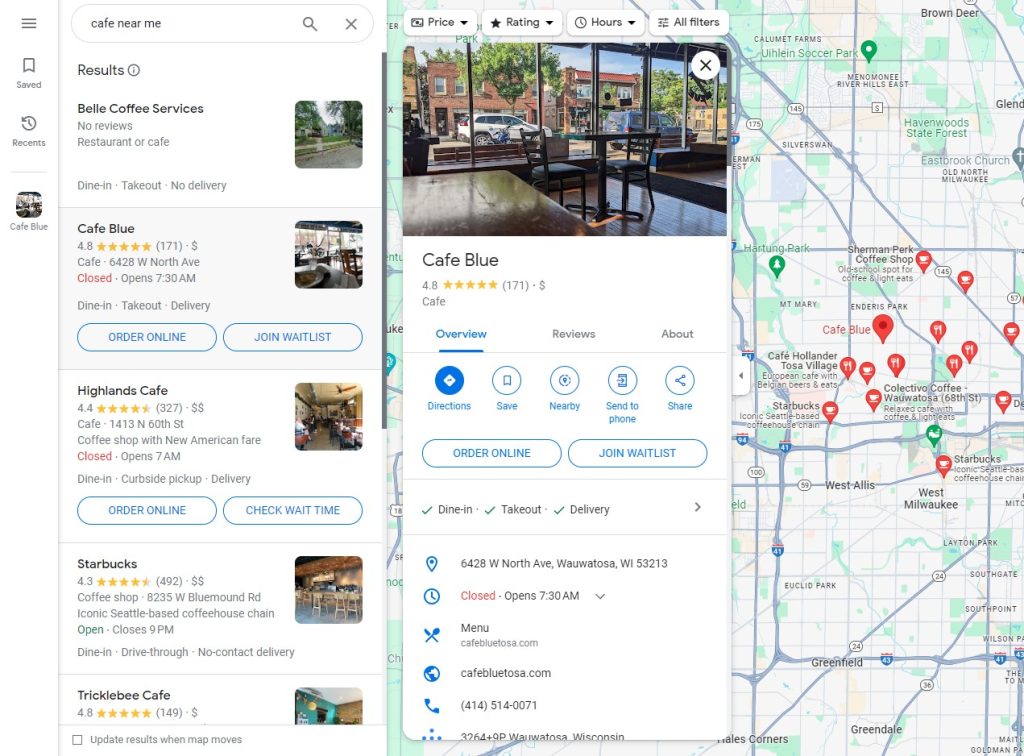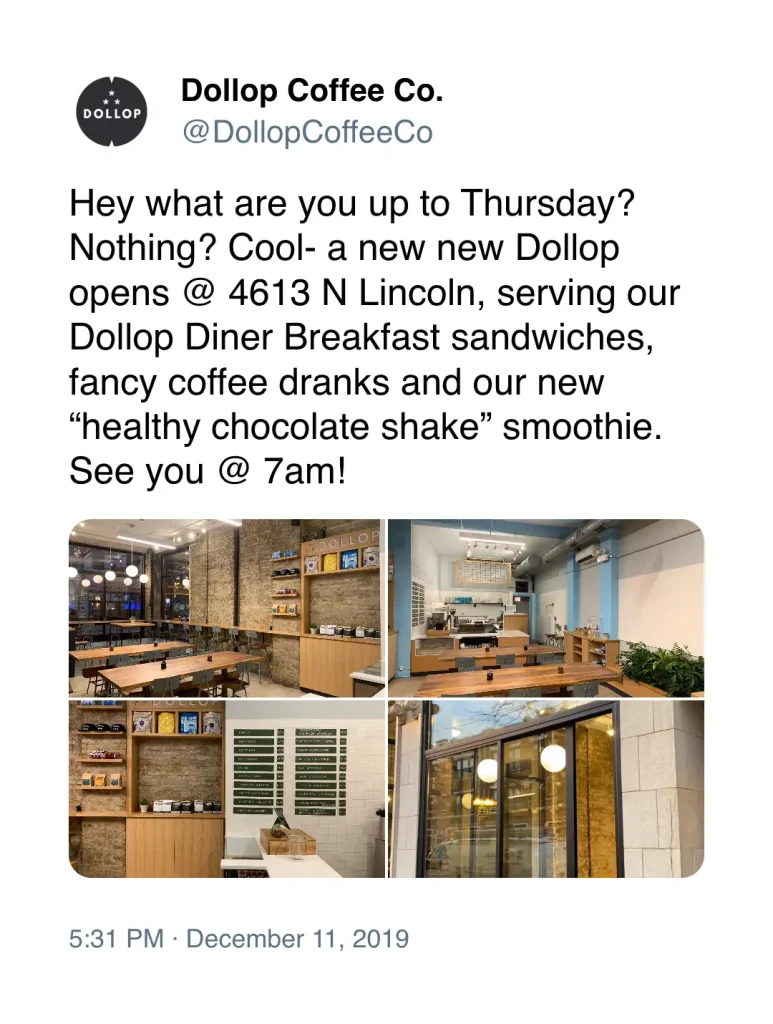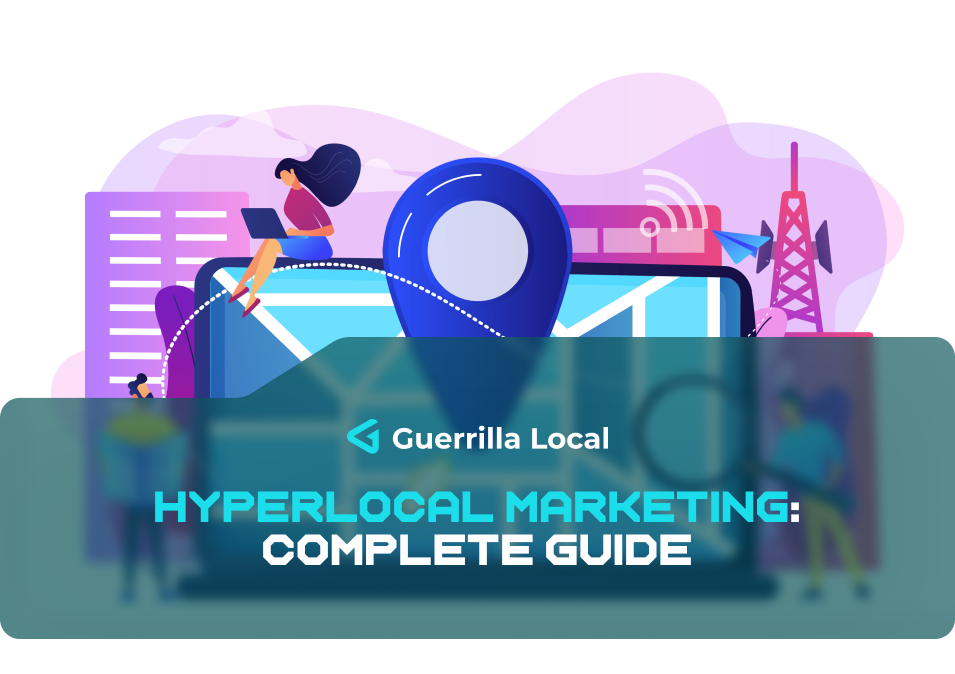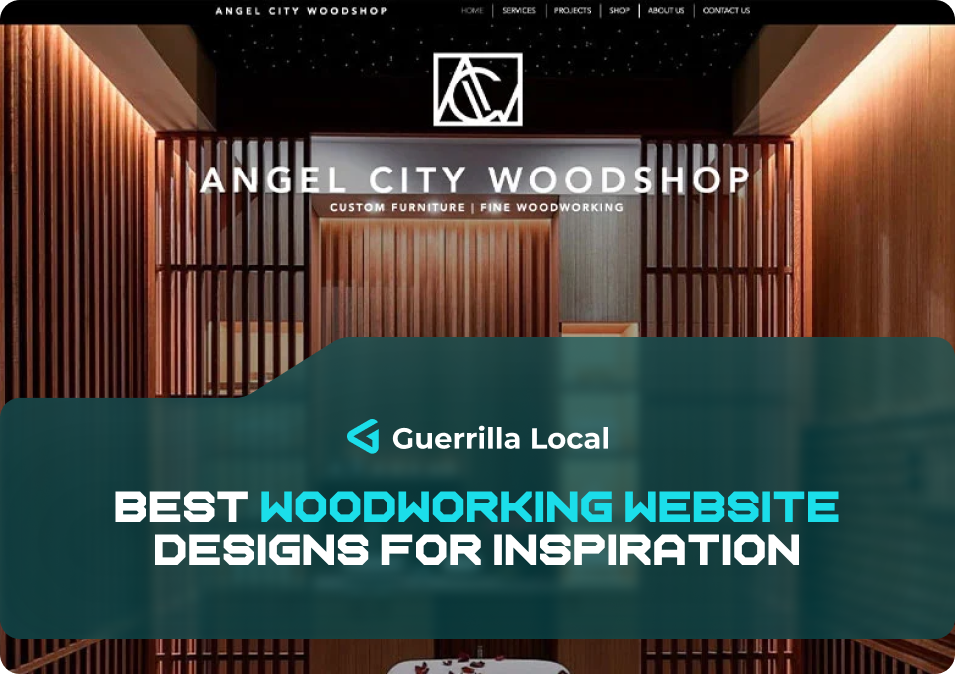Are you eager to elevate your business visibility among local customers? Hyperlocal marketing is the key to unlocking this potential. By optimizing your business for local or ‘near me’ searches, you can significantly enhance your online presence, engage nearby customers, and drive in-store sales.
This article serves as your comprehensive guide, covering everything you need to know about hyperlocal marketing and offering practical tips to start reaching high-intent customers in your local area.
Table of Contents
What is Hyperlocal Marketing?
Hyperlocal marketing is a strategic approach that hones in on engaging a specific audience within a defined local area. The primary goal is to drive foot traffic to physical store locations by catering to the preferences of consumers who rely on “near me” queries for their shopping needs.
When a user searches for a service or product, hyperlocal marketing ensures that businesses within close proximity appear prominently in the search results.
10 Hyperlocal Marketing Strategies
1. Make and Optimize Your Google My Business Listing
A pivotal aspect of hyperlocal marketing is a robust Google My Business (GMB) listing. Businesses need to create and optimize their GMB listings to maximize visibility in local search results, particularly in “near me” queries.
This optimization includes adding relevant keywords to the business description, posting high-quality images, and selecting appropriate categories that align with the business’s goals. By focusing on location-centric details, businesses enhance their chances of being ranked highly in local search results.
2. Show Local Search Ads on Google Maps
Utilize Google Maps advertising to reach local customers effectively. Enable location assets in your Google Ads account, update your Google Business Profile, use location targeting and bidding, and optimize keywords for relevance to your location and local searches.
3. Use Local SEO in Your Hyperlocal Marketing
Optimize your website for local SEO to improve organic search rankings and appear higher in local search results. Create a user-friendly website, incorporate high-quality content with local keywords, and follow SEO best practices such as optimizing metadata and including business details.
4. Ensure Mobile Friendliness
Optimize your website for mobile devices, as over half of website traffic comes from mobile phones. A mobile-friendly site improves user experience and increases the likelihood of customer contact and purchases.
5. Get Online Reviews
Encourage customers to leave reviews for your products or services. Display reviews on your website, Google profile, and social media accounts. Respond to both positive and negative reviews, showcasing your commitment to customer satisfaction.
6. Use Online Citations and Local Directories
Leverage online citations by listing your business on local directories, review sites, and third-party websites. Consistent business details across all listings enhance credibility and visibility in local search results.
7. Enhance Content Marketing
Implement a robust content marketing strategy, starting with a blog. Create content around local queries, answer questions, cover local events and news, and collaborate with other businesses. Share content on your website and social media platforms to attract inbound links and improve rankings.
8. Utilize Hyperlocal Advertising
Create hyperlocal ads through Google Ads and Google Maps. Set a small radius around your business, use relevant keywords with ‘near me,’ and target nearby customers with high purchase intent.
9. Embrace Hyperlocal Social Advertising
Run hyperlocal ads on social media platforms like Facebook, Instagram, and LinkedIn. Customize ads for highly targeted campaigns, engage with your audience, and encourage social interaction.
10. Implement Geofencing Advertising
Explore geofencing advertising to target nearby mobile users with location-based content and ads. Set up geofences around your business to trigger push notifications for customers passing by, enticing them with offers and deals.
Bonus: Offer Local Deals and Discounts
Take advantage of websites and apps that allow you to create local deals and discount vouchers. Platforms like Groupon and Flipp can help you promote your offers, attracting more customers to your stores.
Bonus: Optimize Your Website for Voice Search
Prepare for voice searches by identifying common queries people might ask smart devices. Optimize your website and listings for these terms to appear in voice search results.
Bonus: Offline Advertising
Incorporate traditional offline advertising methods, such as local newspapers, radio, magazines, flyers, business cards, and billboards, to raise local awareness and boost brand recognition.
Hyperlocal Marketing Examples
In the realm of Hyperlocal Marketing, real-world examples serve as powerful illustrations of successful strategies.
Let’s delve into four notable instances where businesses have effectively utilized Hyperlocal Marketing to enhance their visibility and engage local audiences.
1. Cafe Blue
Diesel Cafe stands as a shining example of a well-executed Google My Business (GMB) page. When users search for a cafe nearby, Cafe Blue’s listing excels in providing essential details such as address, menu, contact information, and website.

With a plethora of high-quality photos, this GMB page not only informs but also creates a compelling visual narrative. The cafe’s prominence in search results for queries like “cafes near me” is a testament to the success of their hyperlocal marketing efforts.
2. Glossier
Even global companies like Glossier recognize the value of hyperlocal marketing.
During the opening of a pop-up location in Boston’s Seaport area, Glossier leveraged hyperlocal marketing efforts to build interest among a specific audience: Boston-based customers who could easily travel to the Seaport location.
An Instagram ad strategically placed near a local event, the Super Bowl, showcased Glossier’s adaptability in using hyperlocal tactics to connect with a specific audience during significant local happenings.
3. Dollop Coffee Co.
Dollop Coffee Co., a Chicago-based coffee chain, demonstrates the feasibility of hyperlocal marketing on Twitter.
From their Twitter bio, which includes local language and contact information, to their tweets that consistently incorporate location details, Dollop uses Twitter as a platform to target and engage with local audiences effectively.

A search for “coffee Chicago” on Twitter places Dollop Coffee Co. among the top results, indicating the success of their hyperlocal Twitter strategy.
The Benefits of Hyperlocal Marketing
Embracing hyperlocal marketing offers a range of benefits for businesses:
- Highly Targeted: Hyperlocal allows precise targeting of marketing efforts towards purchase-ready individuals in the local area, ensuring the highest returns.
- Budget-Friendly: By focusing on a small geographic area and targeting purchase-ready customers, hyperlocal marketing makes your budget more efficient, reaching those more likely to convert into customers.
- Increased Footfall and Sales: Brick-and-mortar businesses can experience a significant boost in footfall and sales by connecting with nearby customers actively searching for products or services.
- Flexibility: Hyperlocal strategies can be tailored to suit your goals, budget, and preferences, providing flexibility in implementation.
- High ROI: ‘Near me’ searches often indicate high purchase intent, making it easier and more cost-effective to convert leads into customers. Additionally, optimizing for local queries is less competitive and more affordable.
Implementing Your Hyperlocal Plan
Armed with insights from successful examples, businesses can now embark on implementing their hyperlocal marketing plan. Begin by conducting an audit of your business’s hyperlocal ranking. Utilize “near me” queries to assess competitors’ strategies and identify areas for improvement.
Remember, the key to hyperlocal success lies in the synergy of a well-optimized Google My Business listing, an accessible web presence, local search optimization, and the creation of hyperlocal content.
Conclusion
In the dynamic landscape of digital marketing, hyperlocal strategies stand out as powerful tools for enhancing local visibility and connecting with nearby consumers. Whether you’re a local business or a global brand, embracing hyperlocal marketing can position your brand as the preferred choice for individuals seeking nearby solutions.
As you embark on your hyperlocal journey, consider these examples and insights to ensure your business leaves a lasting impression when customers search for establishments “near me.”
FAQs
What is hyperlocal marketing?
Hyperlocal marketing targets customers in a specific local area, focusing on proximity to businesses. It aims to increase foot traffic and engage nearby customers through location-specific strategies.
Why is hyperlocal marketing important?
Hyperlocal marketing capitalizes on high-intent, local searches. It enhances in-store sales, offers budget-friendly targeting, and provides a flexible, high-return strategy for businesses with physical locations.
How do I optimize my website for local SEO?
To optimize for local SEO, include local keywords in metadata, ensure a user-friendly website, and maintain consistent business details across listings. Highlight your business’s address, contact information, and relevant local keywords.
What are the benefits of hyperlocal marketing?
Hyperlocal marketing offers highly targeted efforts, cost-effectiveness, increased footfall and sales, flexibility in strategy, and a high return on investment. It allows businesses to reach customers actively searching for local products and services.
How can I create hyperlocal content?
Develop hyperlocal content by incorporating local keywords, discussing nearby events, and showcasing your business’s connection to the community. Modify existing content to have a local focus, increasing your visibility in local searches.
What is geofencing advertising?
Geofencing advertising targets mobile users in a specific geographic area, sending them location-based content, ads, or notifications. It’s effective in enticing nearby customers with relevant offers and promotions.
How can Guerrilla Local enhance my hyperlocal marketing strategy?
Guerrilla Local brings unconventional tactics, community fusion, street-level impact, viral social presence, and hyper-targeted ads to redefine hyperlocal marketing. Their approach ensures your brand stands out and makes a lasting local impact.






